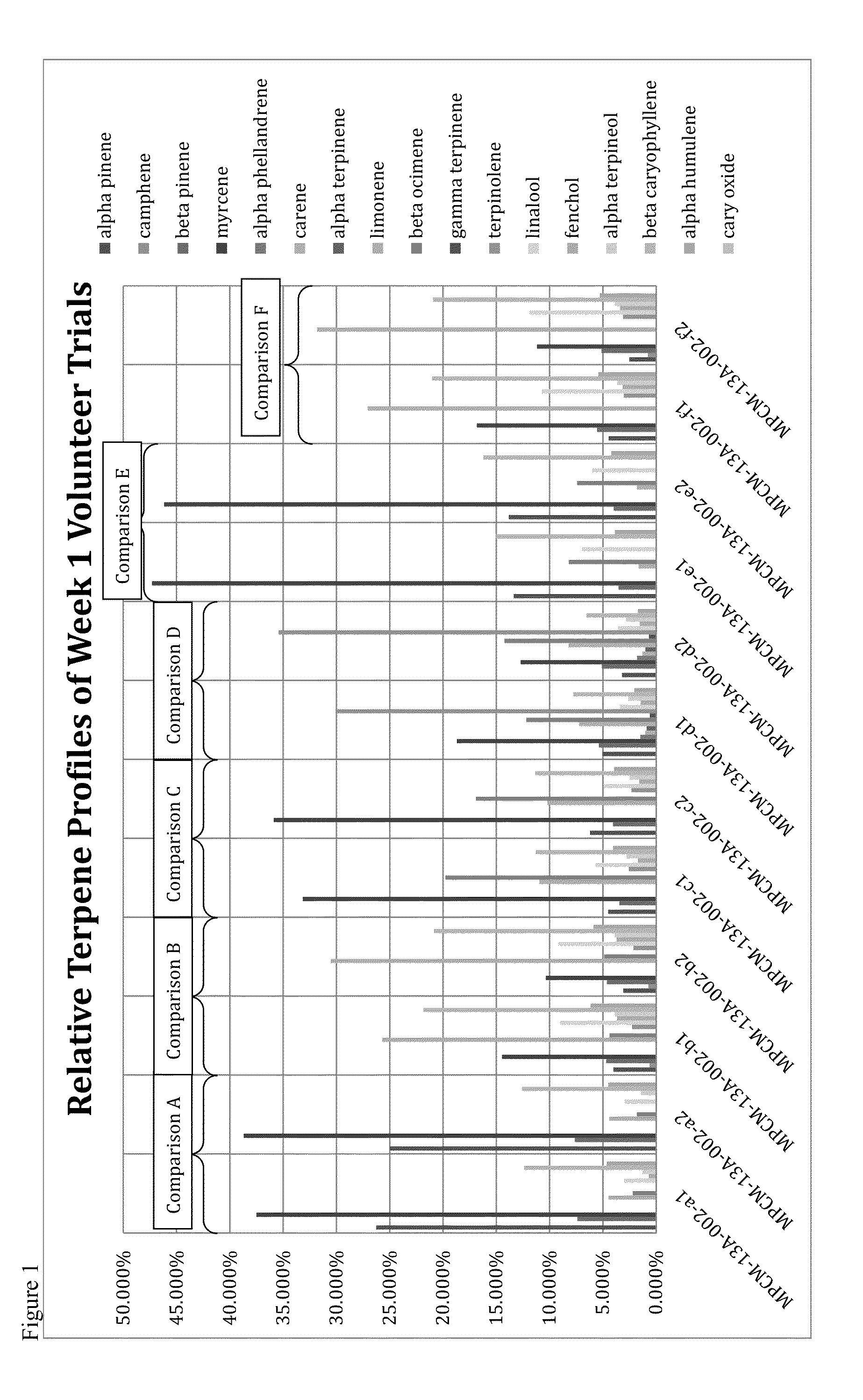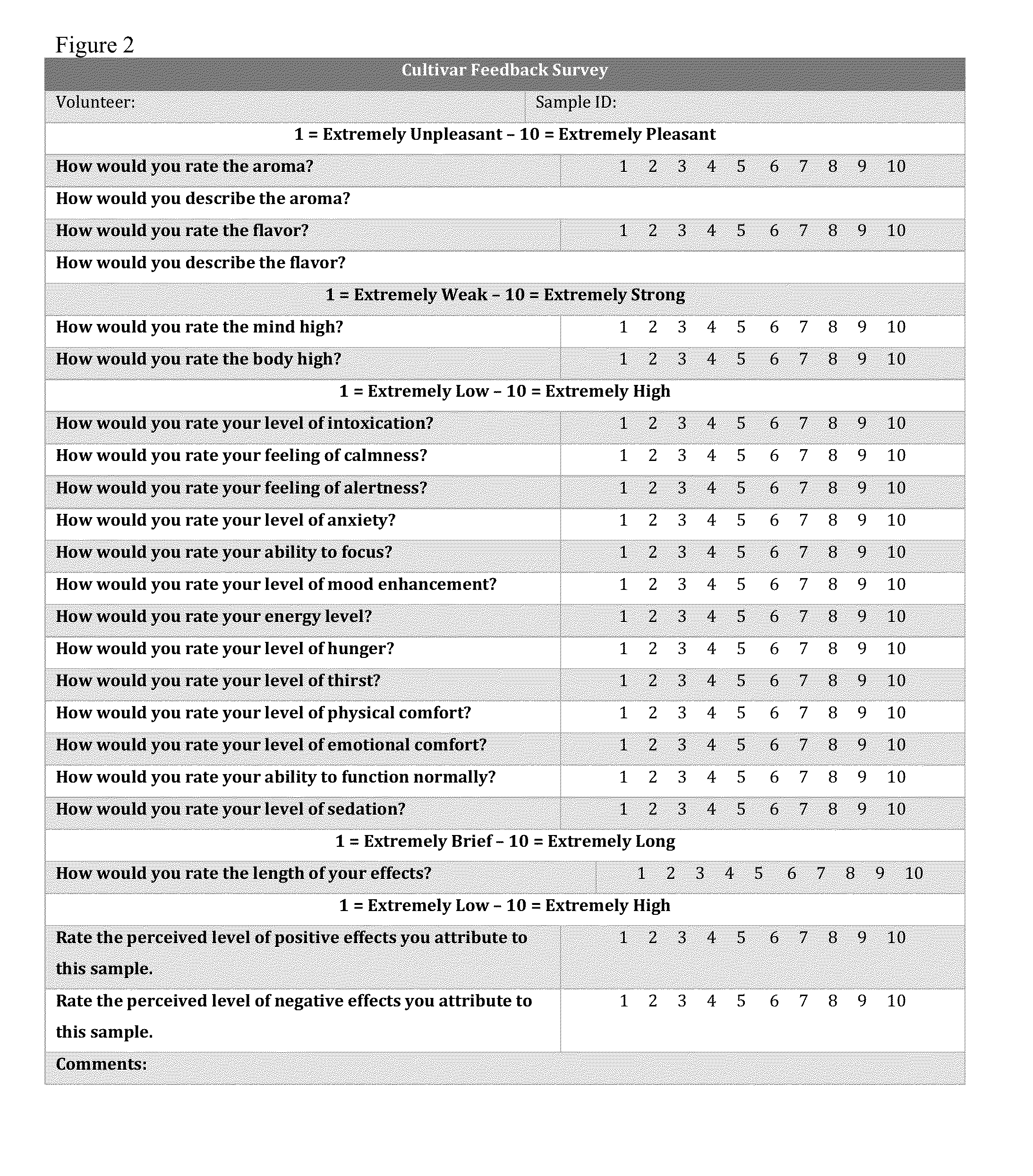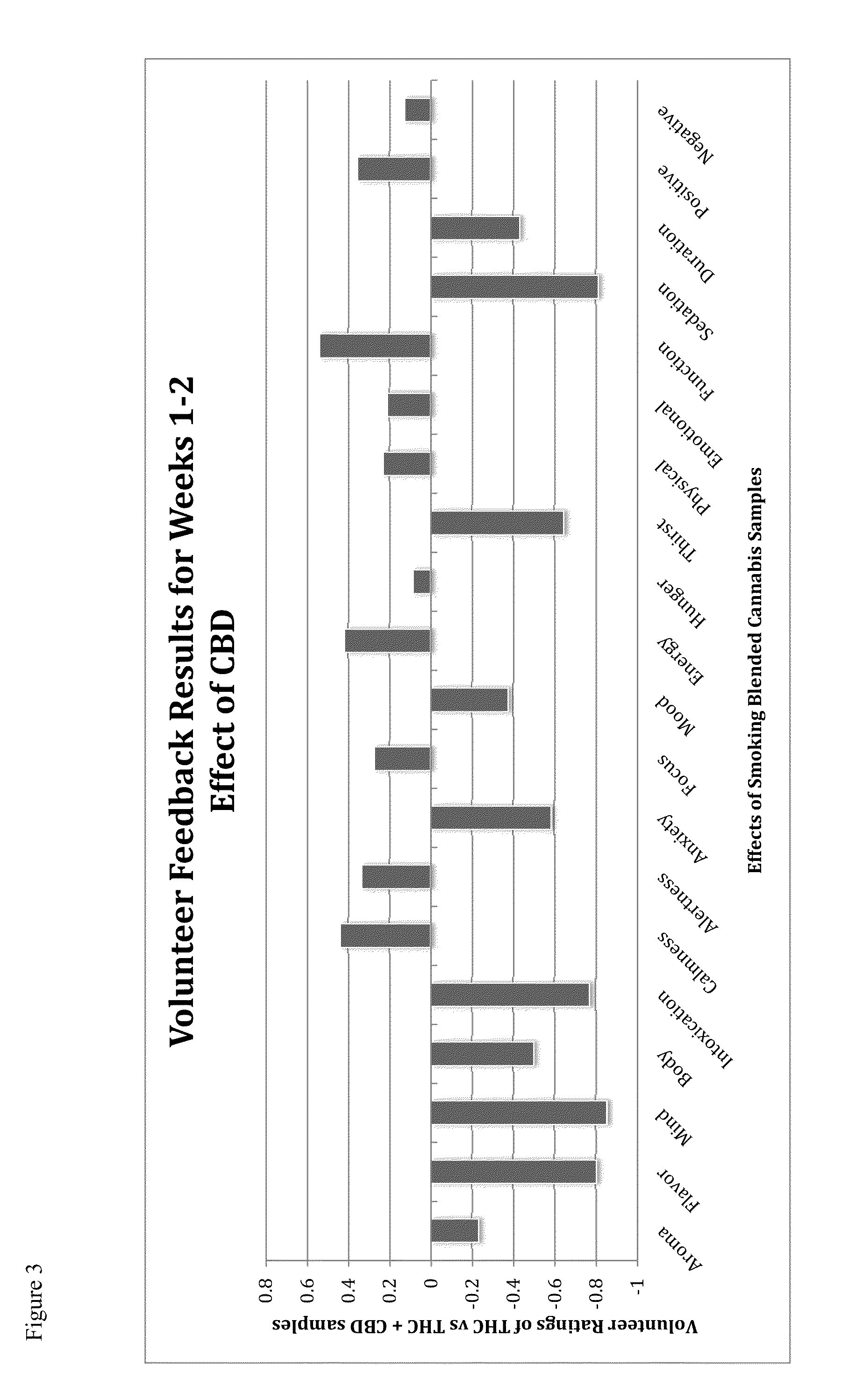Breeding, production, processing and use of specialty cannabis
a technology of cannabis and cannabis leaves, applied in the field of specialty cannabis plants, can solve the problems of difficult to distinguish varieties, and often incorrect or interchangeable nomenclature, and achieve the effects of reducing symptoms, accelerating weight loss, and reducing thc side effects
- Summary
- Abstract
- Description
- Claims
- Application Information
AI Technical Summary
Benefits of technology
Problems solved by technology
Method used
Image
Examples
example 1
Chemical Analysis of Cannabinoids and Terpenes
[0322]Chemical analyses of the parental and progeny specialty cannabis varieties of the present invention was carried out using standard chemical separation techniques well known to those skilled in the arts. Qualitative identification of cannabinoids and terpenes was carried out by GCMS, while quantitative analysis was done by GC-FID and / or HPLC-PDA (Photo Diode Array). Initial field analyses of cannabinoids was performed using thin layer chromatography as described in (“Cannabis Inflorescence & Leaf QC” from The American Herbal Pharmacopeia 2013). The in-house assays for cannabinoids included orthogonal methods of GC-FID and HPLC for the highest level of accuracy.
[0323]Samples were prepared by grinding ˜5 g of dried cannabis flower material in a coffee grinder. From this homogenized material, 500±20 mg was placed in a bead beater vial with ˜1 g of 2 mm beads and 5 mL of working solution. Each sample was placed in the bead beater (BioSp...
example 2
Proprietary Parental Variety Phenotypes
[0339]More detailed descriptions of the development and characteristics of representative Parental Classes of Cannabis Varieties of the present invention are provided below. In some embodiments, the THC parental varieties of the present invention were selected for their morphologies and desirable phenotypes.
GOD13
[0340]Description of Breeding Stock.
[0341]Inflorescences were obtained for a land race of Gold class varieties and seeds from these inflorescences were isolated and put into conditions proper for their germination. The seeds which germinated grew identically. However, upon flower onset, the seedlings were selected for the strongest limonene / Pine-Sol fragrance and narrowed to two phenotypes. Of these, the individual phenotype with the best user experience based on testing was selected to create GO-13, a variety classified into the Gold Class.
[0342]Hypothesized Genetics.
[0343]Cannabis indica ssp. afghanica WLD “Purple Afghan”×C. indica ss...
example 3
Analysis of Proprietary THC Parental Varieties
[0620]One objective of the present invention was to develop cannabis varieties with high terpene oil contents and different terpene profiles to meet various aroma / flavor and medicinal needs. The parental varieties developed in the present invention, underwent chemical analyses as described in Example 1. The resulting cannabinoid and terpene profiles were further subjected to agglomerative hierarchal clustering (AHC) using XLStat to classify varieties into “classes”. Varieties in a given class of cannabis share certain common physiological, chemical and / or morphological characteristics. Thus, according to the present invention, cannabis plants are grouped into named classes according to their primary / dominant flavor(s) in order to establish standard cannabis classes of plants herein referred to collectively as ‘Classes of Cannabis Varieties.’
[0621]As explained in greater detail below, individual cannabis plants of the proprietary cannabis...
PUM
 Login to View More
Login to View More Abstract
Description
Claims
Application Information
 Login to View More
Login to View More - R&D
- Intellectual Property
- Life Sciences
- Materials
- Tech Scout
- Unparalleled Data Quality
- Higher Quality Content
- 60% Fewer Hallucinations
Browse by: Latest US Patents, China's latest patents, Technical Efficacy Thesaurus, Application Domain, Technology Topic, Popular Technical Reports.
© 2025 PatSnap. All rights reserved.Legal|Privacy policy|Modern Slavery Act Transparency Statement|Sitemap|About US| Contact US: help@patsnap.com



